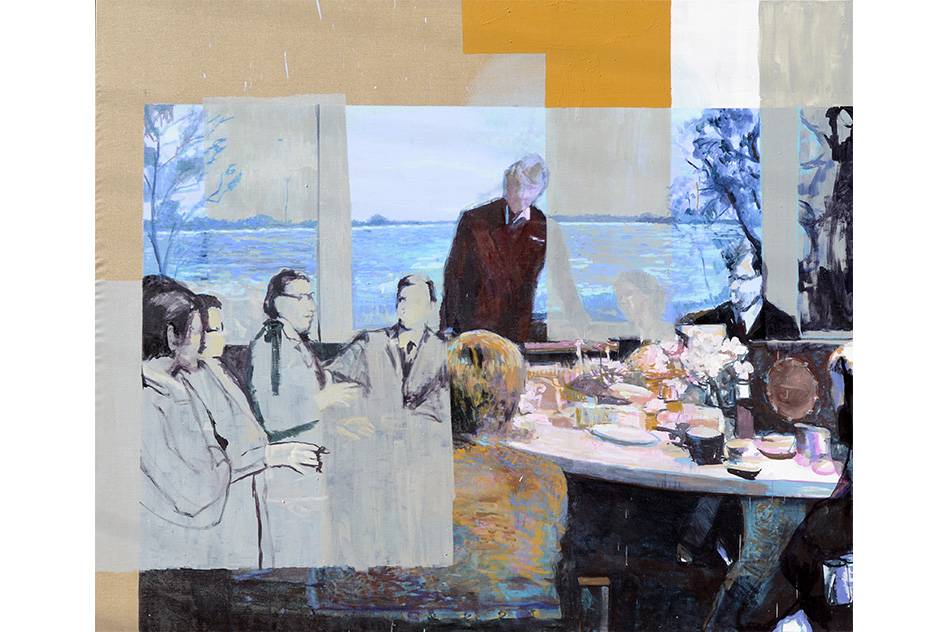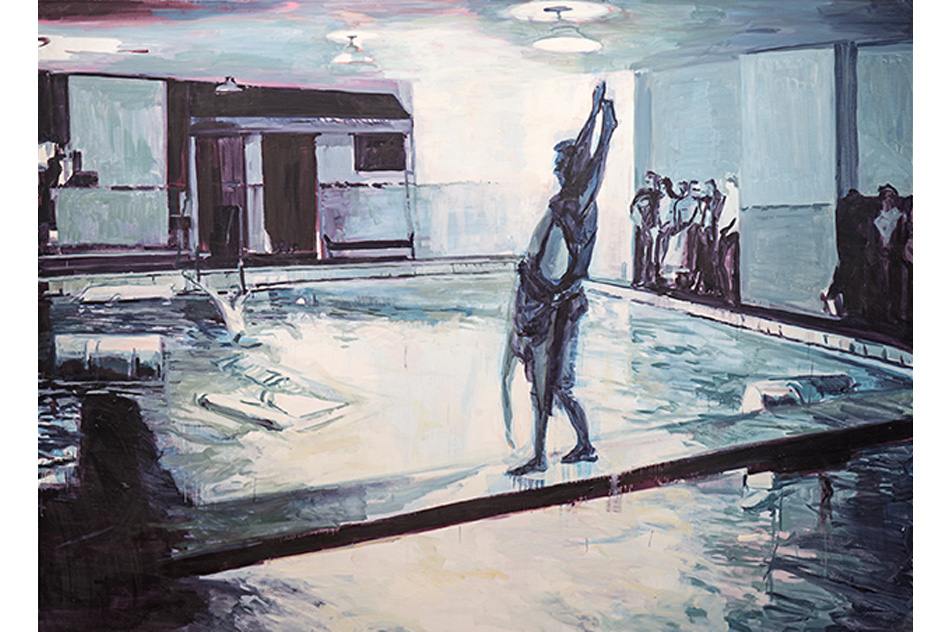


NATALIA BABAROVIC
(Santiago, 1966)
A creator of ambiguous scenes sourced from art journals or directly from experimental films, Babarovic often paints characters engaged in mysterious and indecipherable actions. Such is the case of Rinses I (2012): a painting that represents two people involved in an obscure exercise next to a swimming pool. Based on a photograph of a 1960s performance by U.S. artist Claes Oldenburg, the performative aspect of the action depicted also allegorizes painting as a strangely cryptic act. According to Babarovic, painting in this sense remains eccentric, denaturalized (partly due to its dependency on photography) and, to a certain degree, nonsensical.
Fundación Engel © 2020
Fundación Engel © 2020
